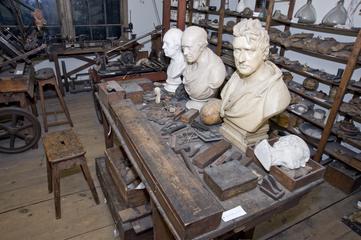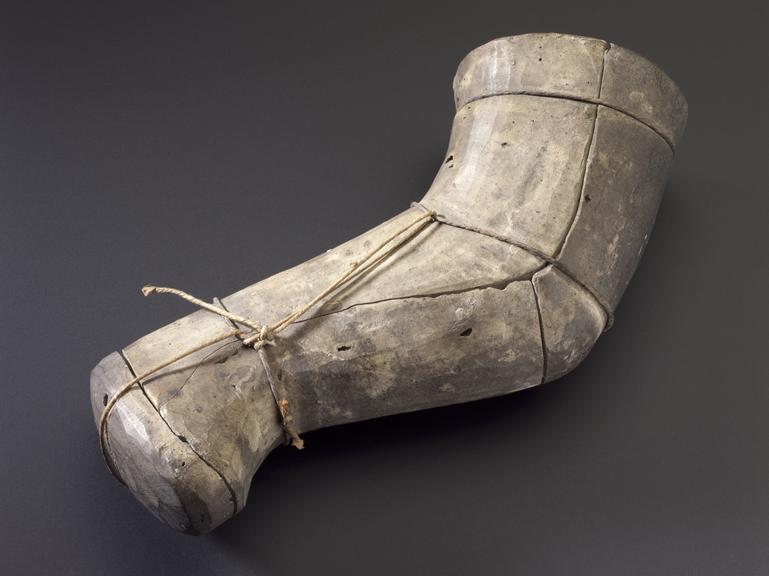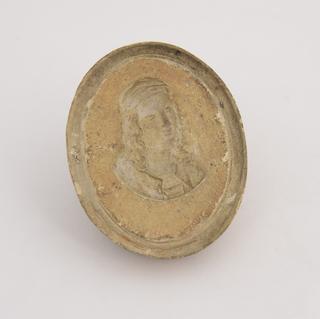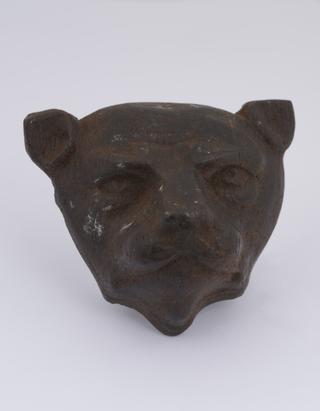
Four-part plaster leg
- Made:
- 1790-1819 in Birmingham

Four-part plaster leg, knee, shin and foot split mould, held together with string, by James Watt, Birmingham, England, 1790-1819 (see note)
This item is part of the contents of the workshop that Scottish engineer James Watt developed at his home, Heathfield, at Handsworth, Birmingham, from c.1795 through to his death in 1819. Although Watt is best known for his work on the steam engine, his workshop contains a wide variety of objects from many different projects, from chemistry to sculpture-copying.
The description of the item was written by Edward Collins, the land agent responsible for Heathfield when the workshop was given to the Science Museum in 1924. Collins could not always identify what he was looking at, but always described what he saw clearly. This has allowed his descriptions to form the basis of subsequent research.
This is a prepared 'blank', cast from plaster of paris and allowed to dry hard, before being mounted in one of the sculpture copying machines in the workshop (most likely the one for producing reduced-size copies) and used as the basis for a new copy of an original portrait bust or similar.
Details
- Category:
- James Watt's Garret Workshop
- Object Number:
- 1924-792/1762/1
- Materials:
- plaster
- Measurements:
-
overall: 120 mm x 330 mm x 180 mm,
- type:
- mould
- credit:
- Major J.M. Gibson-Watt




